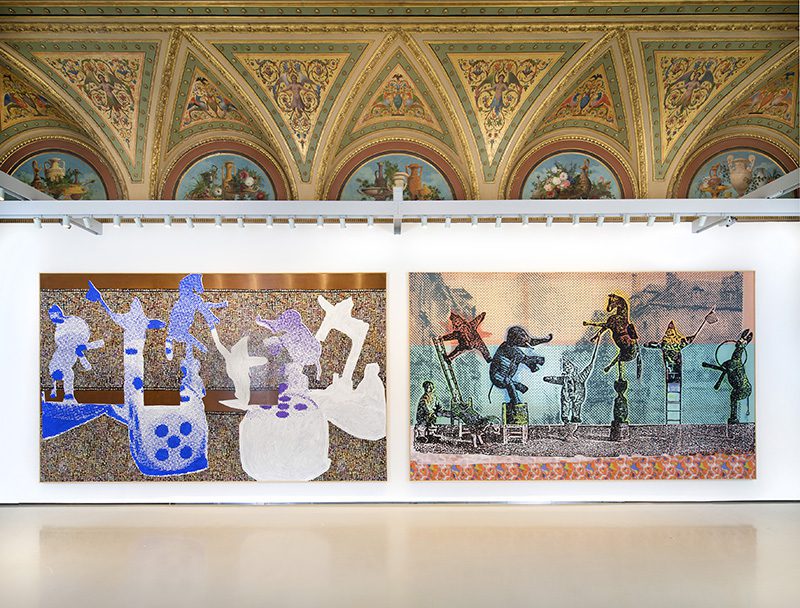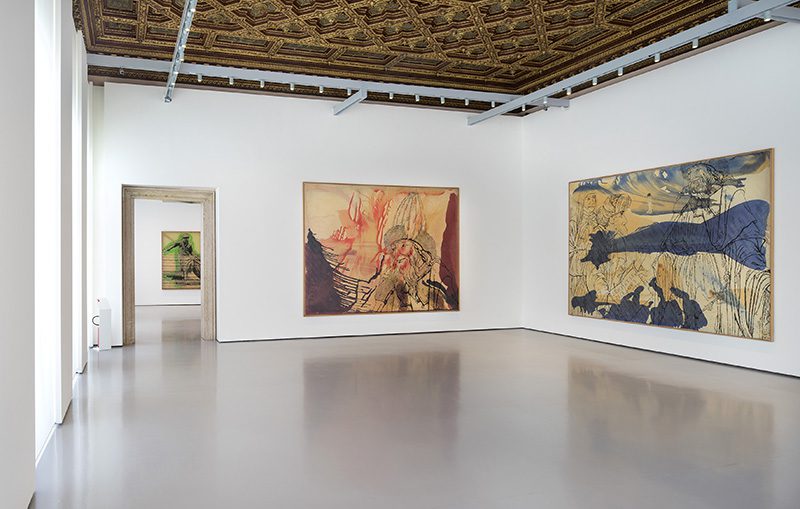ART CITIES:Venice-Sigmar Polke
 For the 1986 Venice Biennale Sigmar Polke conceived an extraordinary installation for the German Pavilion generically entitled “Athanor”. Alchemy and politics were the two main themes that emerged from this body of work, which combined figurative or abstract paintings and installation art based on hygro-sensitive colors applied directly onto the walls, quartz and iron meteorite. These two themes form the thread of the exhibition at Palazzo Grassi.
For the 1986 Venice Biennale Sigmar Polke conceived an extraordinary installation for the German Pavilion generically entitled “Athanor”. Alchemy and politics were the two main themes that emerged from this body of work, which combined figurative or abstract paintings and installation art based on hygro-sensitive colors applied directly onto the walls, quartz and iron meteorite. These two themes form the thread of the exhibition at Palazzo Grassi.
By Efi Michalarou
Photo: Palazzo Grassi Archive
With 90 works the exhibition “Sigmar Polke” spans the artist’s entire career from the 1960s to the 2000s and underlines the variety of his artistic practice. This retrospective marks a double celebration in 2016: the 30th anniversary of Sigmar Polke’s participation to the 1986 Venice Biennale, when he was awarded the Golden Lion and the 10th anniversary of the reopening of Palazzo Grassi. The exhibition opens with “Axial Age” (2005-2007), a monumental set of seven paintings, initially exhibited in the central pavilion at the 2007 Venice Biennale. The retrospective show then unfolds on the two floors of the museum, following a reverse chronological order from the late 2000s to the 1960s. The path is lined with exceptional bodies of work such as: “Strahlen Sehen”, “Hermes Trismegistos”, “Magische Quadrate” and“Laterna Magica”. Through these works one can grasp the ambition of Sigmar Polke’s approach to the alchemy of colours and shapes developed from the ‘80s on. The artist was fond of experimenting with the pictorial matter, as one can see in the small works titled “Farbprobe”, a condensate of all possible mixtures of heterogeneous materials. He equally enjoyed playing with images, by manipulating them with a copy machine (“Für den Dritten Stand bleiben nur noch die Krümel”, by breaking them up through the magnifying of the photographic frame “Man füttert die Hühner”. With Polke, the pleasure to play is always synonym with a sense of humour and casualness. The exhibition includes some of his most representative works, such as “Polizeischwein” and “Amerikanisch-Mexikanische Grenze” , which deal with the topics of police force and borders respectively and which were both presented at the 1986 Venice Biennale.The ‘70s are represented by a beautiful selection of works that illustrate Polke’s iconoclastic frenzy during this particular decade. Finally, the mushrooms in “Alice im Wunderland” (1972) evoke his use of all kinds of psychotropic substances… Throwing light on the origin of this exceptional oeuvre, the exhibition ends with Polke’s artistic production from the ‘60s. Moreover, painting is the artist’s focus in works with a photographic base in which he lays bare the mechanisms of the image or at the twitches of modernity. Likewise, he tackles the issue of the material on which he paints by using printed fabric with decorative patterns that establish a dialogue with the painted subject.
Info: Curators: Elena Geuna & Guy Tosatto, Palazzo Grassi, Campo San Samuele 3231, Venice, Duration: 17/4-6/11/16, Days & Hours: Mon & Wed-Sun 10:00-19:00, www.palazzograssi.it




